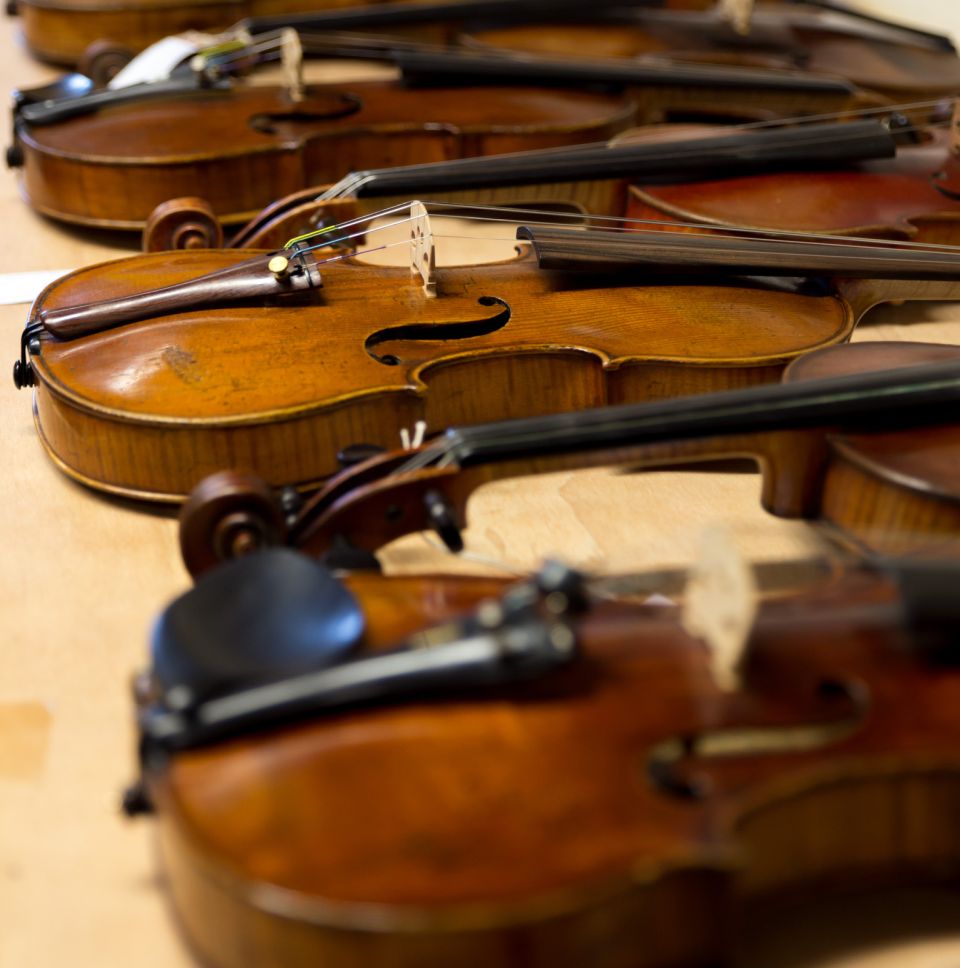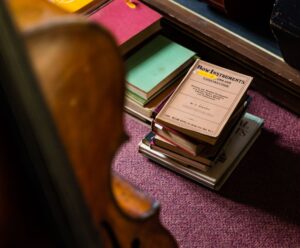Makers Archive 24 March 2022
How to look after your Violin

Regular Maintenance of your Violin
- Try not to touch the varnish; handle it by the neck and the end- button only.
- Clean off rosin and finger marks with a soft cloth (microfibre is ideal as it cleans effectively and doesn’t shed fibres) before you put the instrument back in its case. This is not just cosmetic. Should the instrument be damaged, it’s much harder for a repairer to glue cracks invisibly if they have picked up dirt and rosin from the instrument.
- Check periodically that the bridge is straight; normally the back of the bridge is at right angles to the arching. If necessary, support the back of the bridge with your thumb and the front with your fingers, and gently pull the bridge straight.
- When you change the strings, rub a little dry (unused) soap or soft pencil lead into the grooves of the top of the bridge. This will help the strings to slide easily over the bridge, and make it easier to keep it straight. Take extra care to check that the bridge remains straight while the new strings settle in. Also apply pencil lead to the grooves of the nut; if the strings run smoothly, they will last longer.
- Check the adjusters periodically to make sure that they are not wound down so far that they touch the front of the instrument.
- Protect the instrument from extremes of temperature. In particular, don’t leave it in a parked car in hot weather. This can permanently damage the varnish.
- When the instrument is in its case, make sure it is protected by the blanket supplied with the case, or is wrapped in a soft cloth. This prevents the instrument rubbing against the bow holders, which can cause permanent damage to the front of the instrument.
Longer-term Maintenance of your Violin
It’s a good idea to get a new instrument checked over by the maker after about six months or a year. Thereafter you should have it checked every few years, or more frequently if the instrument is in heavy use or there seems to be any problem. Any reputable maker will be happy to check over the instrument, and would rather catch a small problem early than wait for it to become a major issue.
The things that may change over time are as follows:
- Although the soundpost will have been carefully fitted and adjusted when the instrument left the maker, it may be necessary to adjust the position later. As the instrument settles down, the string tension can slightly change the shape of the instrument. The body may become slightly deeper, and therefore the soundpost becomes very slightly too short. You can often tell if this has happened; it feels as if the instrument has lost some if its clarity and power. As the instrument develops, sometimes the original position of the soundpost is no longer optimal.
- There may be some wear to the varnish, caused by abrasion from sweat and dirt, accidental damage to the instrument, etc. The varnish should be checked regularly so that any damage can be repaired to prevent wear to the wood beneath.
- The fingerboard will wear into pits and grooves from the sweat of the fingers and the vibration of the strings, and will need to be resurfaced.

